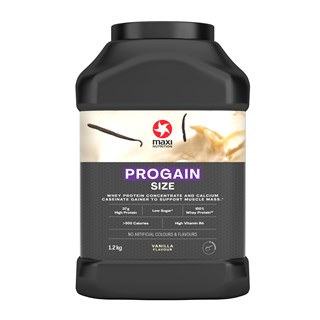One of the goals for many athletes with regards to their strength and conditioning is to build muscle mass.
But there is the key word in all this….and this is that training athletes needs to be functional! Just simply adding mass for the sake of it is not intelligent training when you also consider that athletes need to produce force relative to their body weight in order to move quickly and to endure the demands of their sport.
You really could go on all day about this so I have picked out 10 of my top tips for hypertrophy training with a functional emphasis:
1. Train for strength and power as well as pure hypertrophy
Yes the classic 4 sets of 8-12 reps may produce some gains in hypertrophy, but the key in hypertrophy training is activating those high threshold motor units and these which are best targeted through training with heavy loads and training explosively, so get some heavy squats and deadlifts into your programme as well as some sprints and Olympic lifting movements.
2. Train unilaterally
We don’t do anything with both feet planted simultaneously in sport or life in general! So training unilaterally makes sense from a functional perspective.
However in addition to this, the minute you switch to a single leg or single arm exercise you include a whole variety of muscles that are not recruited during bilateral movements. So throwing in some single leg squats and single arm presses and pulls to compliment your major exercises will help you to achieve your hypertrophy goals.
3. Multi-joint movements over isolation and single joint movements
Yep, this is super obvious, but its amazing how many people still base their training programme around isolated, single joint movements like leg extensions and bicep curls. Replace these two straight away with squats and chins and you’re onto a functional hypertrophy winner!
4. Hypertrophy supersets to improve strength and mass
One of the tools I like to use with my athletes is to superset heavy strength exercises such as squats for 5 reps with an accessory movement such as lunges.
So the goal is to recruit the high threshold motor units through the strength exercise then fatigue them through the accessory movement. Bench Press to push-ups works well, as does chins to DB Rows basically any major full body movement supersetted with a similar supplementary movement.
5. Time Under Tension - minimum 40s of time
Poliquin brought this to the forefront, essentially you need to put the muscle being trained under tension for a minimum of 40 seconds to be in the hypertrophy zone. This principle works well for accessory exercises. So you might go for 8 reps with a 5 second eccentric to achieve this, or you may go 10 reps with a 3 second eccentric.
6. Movements not muscles
From an athletic standpoint, this is probably the key point in the entire article! Training for performance means training our bodies natural movements to produce and resist forces. So squatting, lunging, single leg stances, pressing, pulling and rotating are all key areas that need to be strengthened, not quads, glutes, calves, shoulders, chest, arms and back!
7. Train smart!! Use joint friendly movements such as neutral grip presses, trap bar deadlifts, etc
If you want to be training for any period of time either as an athlete or a weekend warrior, you need to train smart!
Choose neutral grips that are easier on the shoulders and fewer but heavier reps when you squat deep to help your hips. Include rotator cuff exercises, stretch and foam roll to improve your tissue quality. Listen to your body, don’t train through pain and work around injuries not through them!
8. Recover well....eat, stretch and foam roll every day!
Yep this is the boring stuff but arguably the most important. I always tell my athletes to train hard and recover hard, and this doesn’t mean on the dancefloor! Push yourself in the gym by all means but make sure that you stretch off and foam roll daily. You will benefit in the gym no question and your body will thank you!
9. Eccentrics are the way forward
Hypertrophy is all about stress on the muscle fibres which causes muscle to grow during the adaptation process. Eccentric contractions produce more microtears in your muscle fibre than concentric or isometric contractions.
With heavy eccentrics the fibres need to cling on to each other to try to hold the weight. Throwing in a phase of eccentric training every now and again can really help you make gains. I like to work in 5s eccentrics for 6-8 reps on exercises like squats, bench press, chins etc.
10. Core training to resist movement as well as produce it!
Flexion, extension and rotation are all staple core movements in most health clubs and gyms. In reality, functional core training is all about resisting movement not producing it.
Not only will you benefit from a performance perspective, but your hypertrophy gains will be better too as your body will be stiffer in the big exercises areas allowing you to lift more weight. Make sure you can hold a 2 minute front plank and a 1 minute side plank, then work towards anti-rotation presses, single arm farmers walks, barbell rollouts and many more higher level movements that stress the prevention of movement rather than the production of it!
So there you go, a few tips to fine tune your hypertrophy training and help make it a little more athletic. You will feel better and make better gains from making these adjustments.





.jpg?w=848&h=328&auto=format,compress&fit=crop)








